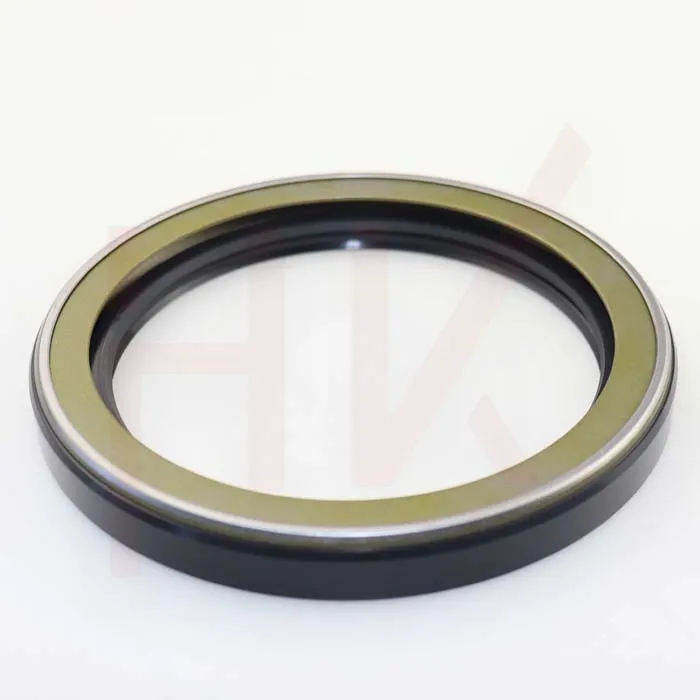Nov . 16, 2024 04:27 Back to list
wiper seal
Understanding Wiper Seals Their Importance and Functionality
Wiper seals are vital components in various mechanical systems, particularly in hydraulic cylinders and machinery that rely on fluid movement. These seals play a significant role in ensuring that fluids remain contained within the system, preventing leaks and contamination while maintaining optimal performance. Understanding the function and significance of wiper seals can help in their selection, maintenance, and replacement, ultimately leading to improved system longevity and efficiency.
What is a Wiper Seal?
A wiper seal, often referred to as a scraper seal, is a type of sealing component designed to prevent dirt, debris, and other contaminants from entering a hydraulic cylinder or other machinery while also controlling the leakage of fluids. Typically made from materials such as rubber or polyurethane, these seals are designed to endure a variety of environmental conditions, including extreme temperatures and pressures. Their primary role is to protect the internal parts of hydraulic systems, ensuring smooth operation by keeping foreign particles out.
Functionality of Wiper Seals
The functionality of wiper seals is multifaceted. Primarily, they serve as a barrier that removes contaminants from rod surfaces as they dynamically stroke in and out of the cylinder. The wiper seal is positioned at the outer end of the cylinder, interacting with the rod and scraping off any dirt, grime, or other materials that might have accumulated. This action is critical, as even small particles can lead to significant wear and tear on the hydraulic components over time.
Moreover, wiper seals play a pivotal role in maintaining system pressure by preventing external contaminants from entering the sealed environment. When contaminants infiltrate a hydraulic system, they can cause premature failure of other seals, increase wear on moving parts, and reduce the overall efficiency of the machinery. By effectively keeping these elements at bay, wiper seals contribute to the reliability and efficiency of the entire system.
Types of Wiper Seals
Wiper seals come in various shapes and styles, designed for specific applications and operational conditions. Some common types include
wiper seal

1. Lip Wipers These wipers have a single or multiple lips that form the scraping edge. They are common in applications where light to moderate contaminants are present. 2. T-seals Named for their T-shaped design, these seals provide enhanced protection against both dirt and fluid leakage and are often used in high-pressure systems.
3. U-cup seals Featuring a U-shaped cross-section, these seals are particularly effective at retaining the necessary lubricants while providing sufficient wiper action to keep contaminants out.
4. Multi-lip seals These seals offer multiple points of contact to better protect against dirt and fluid loss, suitable for extreme conditions.
Selecting the correct type of wiper seal for a particular application is crucial to ensuring that the machinery operates efficiently. Factors such as the type of fluid being contained, operating pressure, and temperature ranges all influence the choice of wiper seal.
Maintenance and Replacement
Regular maintenance and timely replacement of wiper seals are critical to the longevity of hydraulic systems and machinery. Signs of wear may include visible damage to the seal, leaks around the rod, or the presence of contaminants within the hydraulic fluid. Addressing these issues promptly can prevent larger system failures and costly downtime.
When replacing a wiper seal, it is important to ensure that the new seal matches the specifications of the original part. This includes considerations of size, material compatibility, and design to maintain the integrity of the sealing environment.
Conclusion
In conclusion, wiper seals are essential for the smooth operation and longevity of hydraulic systems and equipment. By preventing contamination and controlling fluid leakage, they protect sensitive components and contribute to overall efficiency. Understanding the various types of wiper seals and their functions can aid in the proper maintenance and care of machinery, ensuring reliable performance for years to come. Investing in quality seals and adhering to maintenance schedules not only saves time and money but also enhances the operational lifespan of critical equipment.
-
TCN Oil Seal Metal Ring Reinforcement for Heavy Machinery
NewsJul.25,2025
-
Rotary Lip Seal Spring-Loaded Design for High-Speed Applications
NewsJul.25,2025
-
Hydraulic Cylinder Seals Polyurethane Material for High-Impact Jobs
NewsJul.25,2025
-
High Pressure Oil Seal Polyurethane Coating Wear Resistance
NewsJul.25,2025
-
Dust Proof Seal Double Lip Design for Construction Equipment
NewsJul.25,2025
-
Hub Seal Polyurethane Wear Resistance in Agricultural Vehicles
NewsJul.25,2025
-
The Trans-formative Journey of Wheel Hub Oil Seals
NewsJun.06,2025
Products categories
















